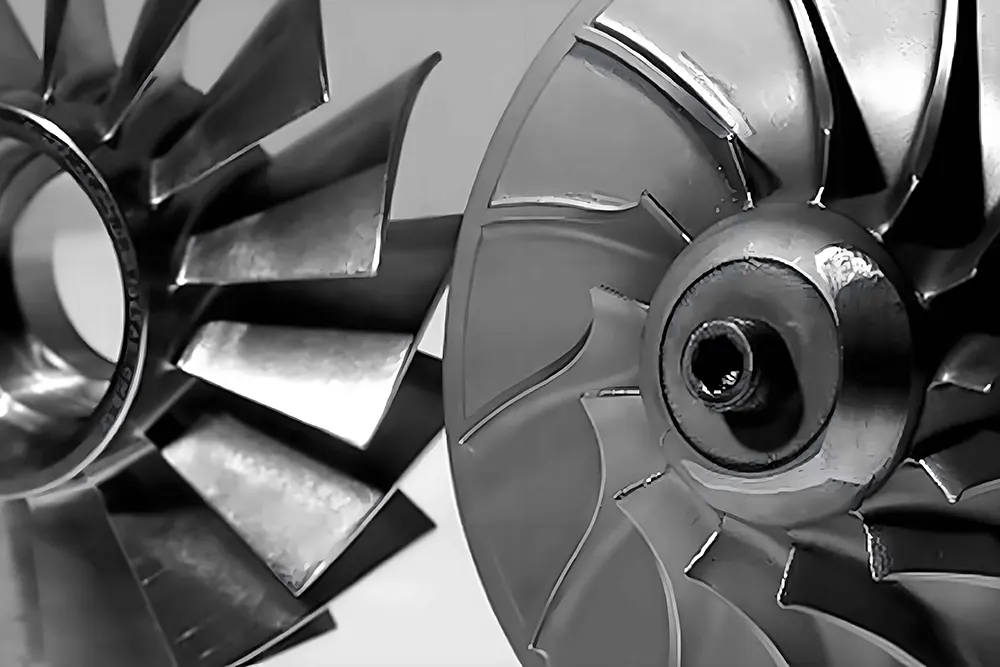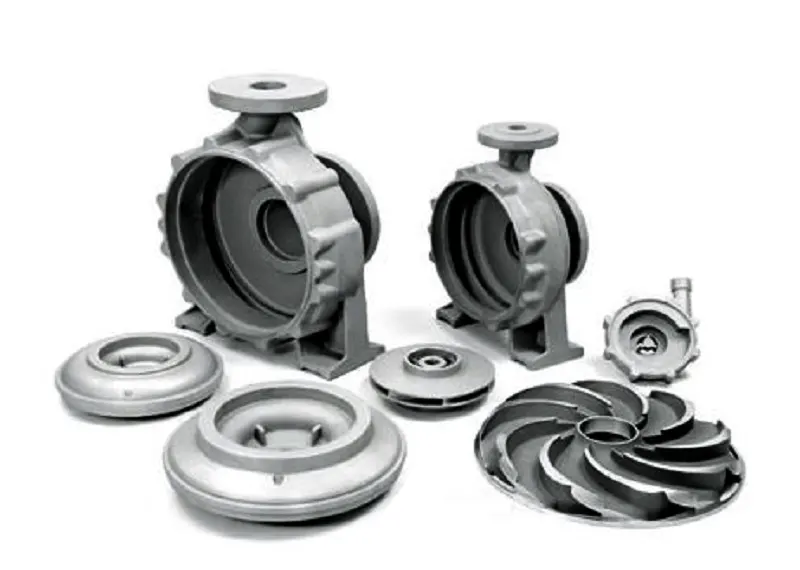
Centrifugal pumps acquire immense importance in modern industrial applications, particularly in chemical, oil and gas, power generation, and manufacturing. Investment casting is one of the processes where these pumps are used. The casting processes require precision and efficiency-that is, some pumps should withstand extreme conditions-from high temperatures and viscosities to aggressive fluids. Such are the demands of centrifugal pump casting: designed for meeting the stringent requirements of investment castings for pump industry processes.
The centrifugal process pumps in investment casting can also be employed for a high-temperature transfer of the molten metal into the molds with sheer accuracy and uniformity. Investment casting uses the centrifugal pumps in enabling the molten material to flow smoothly, thus reducing the chances of defects and maximizing the quality of casting. This article provides a comprehensive view of centrifugal pump casting, its relevance in investment casting, and the most relevant factors to consider when selecting such pumps for your works.
Understanding the Centrifugal Pump in Investment Casting
Centrifugal pumps work on the principle of converting rotational kinetic energy to pressure energy. Molten metal is impelled into the mold cavity by centrifugal pumps in investment casting. These pumps provide the pressure needed to push the molten metal further into the mold to fill it evenly. All centrifugal pump casting systems are now highly sought after due to good constant-controlled flow norms required for a casting to maintain quality and precision in its manufacture.
1. Investment Casting Centrifugal Pump Casting Mechanism
The investment casting process of the centrifugal pump casting system can be divided into several stages, all important for smooth running and identical production processes. In general, centrifugal pumps are used in transferring molten metals or any other material into molds under controlled conditions. Let's look at how the centrifugal pumps achieve this:
1.1 Components of a Centrifugal Pump
- Impeller: The impeller is actually the heart of the centrifugal pump, which charges kinetic energy to the molten metal. The impeller, if rotated, transfers the molten metal radially outward, hence creating enough pressure to push the metal into the mold cavity.
- Casing: The casing surrounds the impeller and is responsible for the transformation of kinetic energy spinning from the impeller into pressure energy. Shape and material for the casing are selected depending on which kind of molten metal is going to be used.
- Suction and Discharge Ports: Openings through which molten metal enters and exits from a pump, respectively, both during and after casting. The suction port pulls the molten metal from a reservoir or furnace and the discharge port delivers the liquid metal to the mold.
- Bearings and Shaft: These assist in aligning rotating impeller and transferring energy that azept in moving the molten metal. From the contact surface of bearings, smooth motion of the pump and less friction and wear are permissible.
- Pump Speed: The rotational speed of the impeller defines the flow rate of the molten metal. With higher speeds, more pressure is generated, while at the same time the lower speeds will give a gentler flow for operations that are more sensitive.
- Flow Rate: The flow rate must be varied with mold size and intricateness. The larger a mold is, the faster the flow rates it requires, whereas the more intricate the design, the slower it may need to be.
- Pressure: The pressure produced by the pump must overcome the resisting action imparted by the mold cavity such that molten metal is able to fill the cavity completely. The desirable pressure is dependent upon the viscosity of the molten material and the complexity of the mold.
1.2 Operating Principle of Centrifugal Pump Casting
A centrifugal pump bases its operating principle on the laws of motion by Newton. The impeller is rotated by a motor in order to obtain centrifugal force and throws the molten metal away toward the casing of the pump. Since this molten metal accelerates, the velocity with respect to its pressure increases accordingly. This is done to raise the pressure with the view of pushing the metal through the mold cavity via the discharge port. On entrance into the mold, the temperature goes down; then, after some time, solidification occurs and releases a well-shaped cast. A design of the centrifugal pump casting should consider many aspects:
2. Why is Centrifugal Pump Casting Essential for Investment Casting?
2.1 Consistency and Uniformity
In centrifugal pumps, one main advantage of centrifugal pump casting includes continuity with a smooth flow. Molten metal that was introduced at a uniform constant rate must ensure the rate of cooling is similarly uniform throughout and that it will provide perfect solidification. This will surely minimize possible defects like porosity, irregular thickness, and other general distortion in several parts of castings. Due to the lack of a consistent flow, the defects in casting could arise either from air pockets or incomplete filling of the mold.
2.2 Handling of Molten Metals at High Temperature
Centrifugal pumps can handle molten metals within a wide temperature range-from the temperatures of high-temperature alloys such as titanium, aluminum, and superalloys. Such materials need pumps that will bear these extreme temperatures without an ounce of performance loss. Their ability to bear high temperatures makes them vital during investment casting processes for industries such as aerospace and energy, where parts are under the imperative of withstanding extreme operating conditions.
2.3 Flexibility in Viscous Fluid Manipulation
The viscosity of molten metals can be different depending on their composition and temperature. Centrifugal pump casting systems are designed to handle a wide range of viscosities, thus being suitable for various metals and alloys. Unlike other types of pumps that may struggle with more viscous materials, centrifugal pumps maintain high efficiency even with thicker, more sluggish molten metals.
2.4 Energy Efficiency and Cost-Effectiveness
As for this type of pumps, compared to others, it should be rather considered an energy-efficient unit, especially taking for example a high-volume casting operation. In the issue at stake, they will go with quite high flow rates, while consumption remains relatively small; therefore, centrifugal ones remain very economical for great-scale productions. In addition, the solid structure requires fewer repair works during a long time period, meaning their operation costs are duly decreased.
2.5 Safety Considerations
Centrifugal pumps are designed intrinsically with safety for operation. Thus, the ability of centrifugal pumps to resist high temperatures, resist corrosion, and operate in a pressure-tight condition makes them safer for operation in very hazardous environments typical of an investment casting foundry. A well-managed centrifugal pump ensures very safe and efficient transfer of the molten metal, reducing the chances of accidents or spillage.
3. Centrifugal Pump Casting System Types
In the light of this, various configurations of centrifugal pumps are employed in different applications for casting. Knowledge of available types of centrifugal pumps aids manufacturers in choosing the most effective system that could meet their requirements.
3.1 Single-Stage Centrifugal Pumps
Single-stage centrifugal pumps may be applied in smaller-scale casting operations or processes requiring only moderate flow rates and pressures. This pump design incorporates a single impeller and is typically utilized in the casting of small parts or parts with less complicated geometries. Single-stage pumps are normally cheaper and easy to maintain; they may not be suitable for high-pressure or large-scale operations requiring high flow rates.

3.2 Multi-Stage Centrifugal Pumps
Centrifugal multi-stage pumps boast several advantages over simplex centrifugal-type pumps in investment casting activities for large capacity and intricate mold work. In the centrifugal type multi-stage model, a set of impellers are connected stage by stage through a common drive shaft and build pressure by developing pressure across each impeller and then delivering increased pressure within the piping of the system. Multistage pumps have greater volumetric capabilities which allow more material to be circulated at faster speeds; hence, allowing large castings or more castings simultaneously-very typical operations for an aerospace or automotive business, among other specific applications.
They are, in addition, complicated and much more expensive when compared to the single-stage pump. However, they offer high performances, relating to the flow rate and pressure, especially where mold cavities are big or high viscosity metals have to be treated.
3.3 Centrifugal High-Pressure Pumps
High-pressure centrifugal pumps are used in investment casting where the mold is very intricate and detailed to push the molten metal into narrow channels or fine features. These pumps create much higher pressure than the standard centrifugal pumps, hence completely filling even the smallest sections of the mold with molten metal. High-pressure pumps are essential in industries that make turbine blades, medical implants, or precision-engineered components.
3.4 Magnetic Drive Centrifugal Pumps
Magnetic drive centrifugal pumps are applied in transfers of molten metals which may be potentially reactive or hazardous. Unlike conventionally sealed centrifugal pumps, magnetic drive pumps transmit the torque onto the impeller by magnetic fields and, therefore, do not require mechanical seals that can wear out or leak. Such pumps are ideal for transfers of reactive alloys or in applications where contamination needs to be at a minimum, such as the manufacture of aerospace or medical parts.
4. Centrifugal Pump Casting System Selection Criteria
Selection of the proper centrifugal pump casting system is very important to ensure smooth molten metal flow and production of quality pump cast parts. A number of factors need to be considered in selecting:
4.1 Type of Metal Being Cast
Type of metal being molten has a large impact on the specifications required of the centrifugal pump. High-temperature metals like titanium, superalloys, or cast iron will convey metals requiring very high heat and anti-corrosion pumps. Viscosity of the metal melted will also determine a pump's actual design: higher-viscosity metals necessitate pumps with stronger motors and bigger impellers.
4.2 Mold Complexity and Size
The size and complexity of the mold also determine the type of pump that will be required. Large molds or those with intricate designs may require high-pressure or multi-stage centrifugal pumps, while simple molds can be adequately served by single-stage pumps. The important thing is to match the capabilities of the pump with the requirements of the mold and the final cast part.
4.3 Flow Rate and Pressure Requirements
Different casting processes involve flow rates and pressures. For example, a big, simple mold requires high-flow rate, whereas the complex small molds call for a better-regulated flow or slower flow. The centrifugal pumps have their applicability to them based on changing the impeller's speed or changes in the applied pressure settings accordingly.
4.4 Pump Material and Strength
The extreme conditions to which centrifugal pumps are subjected, with high temperatures, abrasive materials, and corrosive substances, mean that great care is required in the selection of materials for the components that comprise the pump-the casing, impeller, and shaft. Commonly, stainless steel is used due to its heat and corrosion resistance.
4.5 Maintenance and Serviceability
The ease of maintenance is another key factor in the selection of a centrifugal pump. Designs that allow easy disassembly, cleaning, and inspection will minimize losses from downtime and reduce maintenance expenses. Besides, the manufacturer shall liaise or choose such pumps whose parts are available for quick turnarounds whenever repair needs arise.
Conclusion
Centrifugal pumps are at the heart of most investment casting operations. Centrifugal pump casting systems help to achieve high-quality, intricate castings with minimal defects by ensuring steady, controlled molten metal flow. The selection of the right pump for the required casting will involve consideration among a number of factors: type of metal being cast, complexity of the mold, and flow rate and pressure required. Moreover, good maintenance and periodic checks will prolong the life of your centrifugal pumps.
